Oils, Wax & Grease – Lubricants and Rust Protection
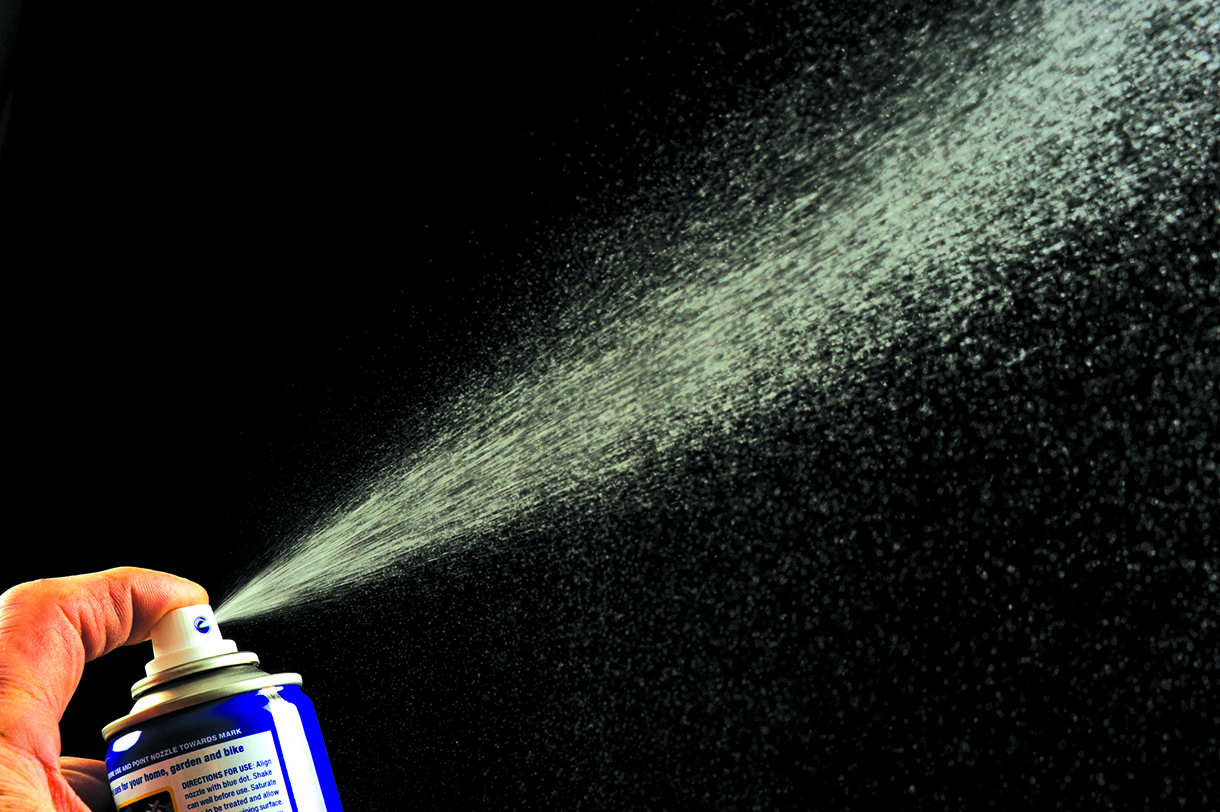
We wax lyrical about the sticky subject of keeping your tools shiny and running smoothly…
An email from a reader querying my advocacy of using that ubiquitous product WD-40 and it’s limitations, set me on a train of thought about how we need to keep the wheels of woodworking turning, so to speak.
Ever since human beings have had a need to get objects to move or tools of any kind to function well, there has been a need to lubricate and protect. As tools and technology get more sophisticated, so newer more specialised materials have become available to help do this. I haven’t written an exhaustive list of lubricants and rust protection, but I hope it will be a guide to help ease the way.
The first thing is to consider what the general descriptions of different materials means as shown below. These descriptions have been written in a rather academic way trying to encapsulate all the relevant properties of these materials.
Class definitions
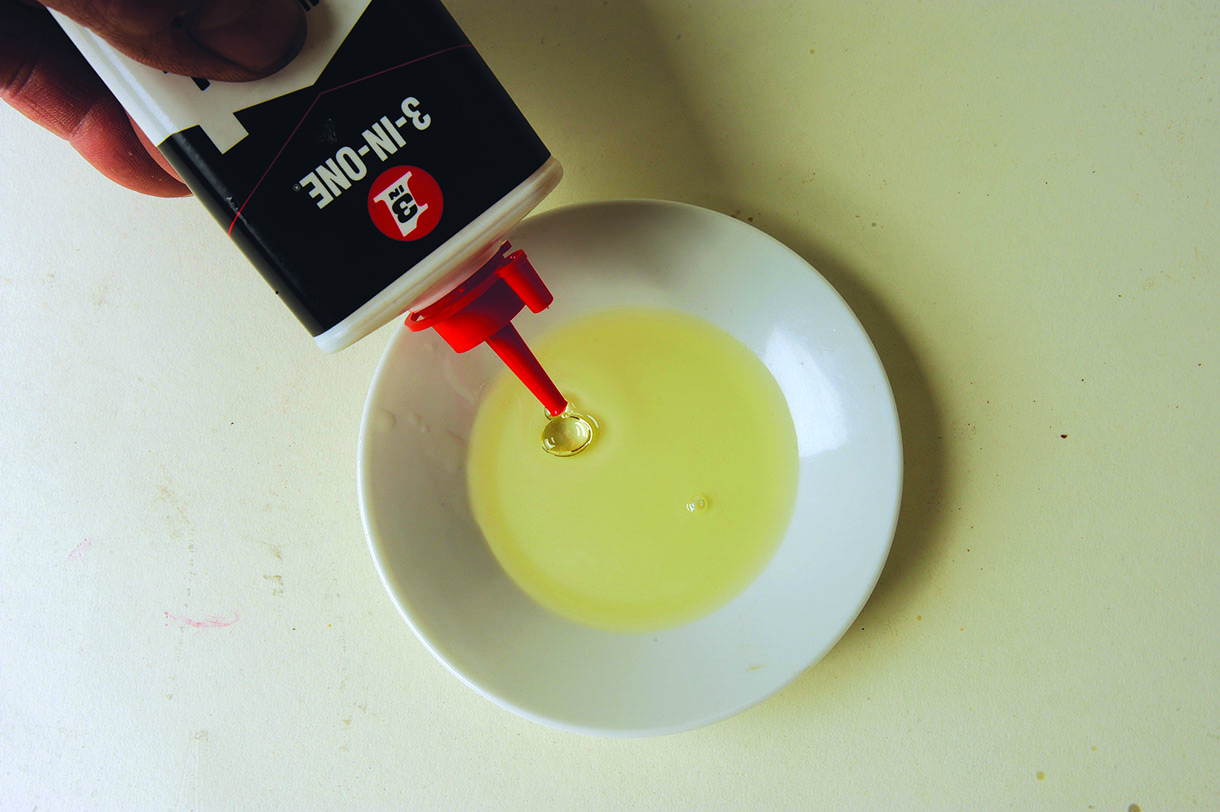
Oil – an oil is any neutral, non-polar chemical substance that is a viscous liquid at ambient temperatures and is both hydrophobic – immiscible with water, literally ‘water fearing’ – and lipophilic – miscible with other oils, literally ‘fat loving’. Oils have a high carbon and hydrogen content and are usually flammable and slippery
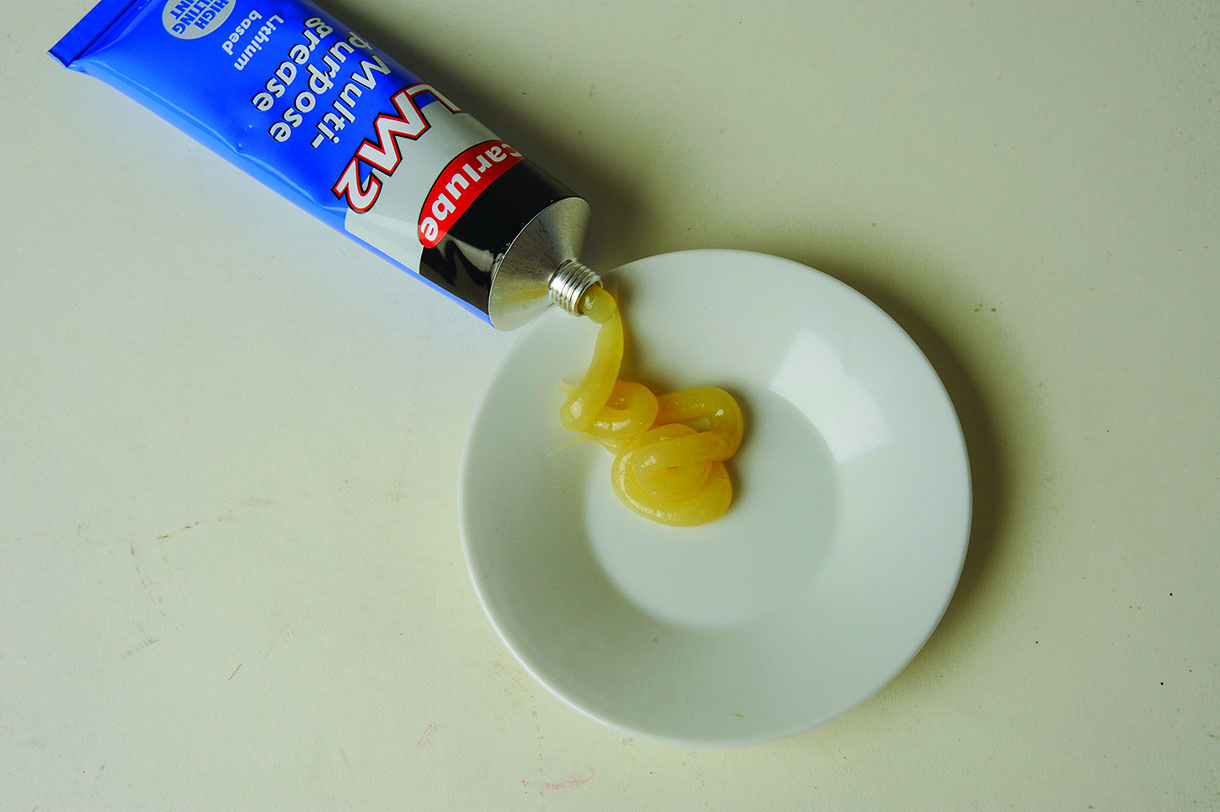
Grease – grease is a semisolid lubricant. Grease generally consists of a soap emulsified with mineral or vegetable oil. The characteristic feature of greases is that they possess a high initial viscosity, which upon the application of shear – sliding motion – drops to give the effect of an oil-lubricated bearing of approximately the same viscosity as the base oil used in the grease. This change in viscosity is called thixotropy
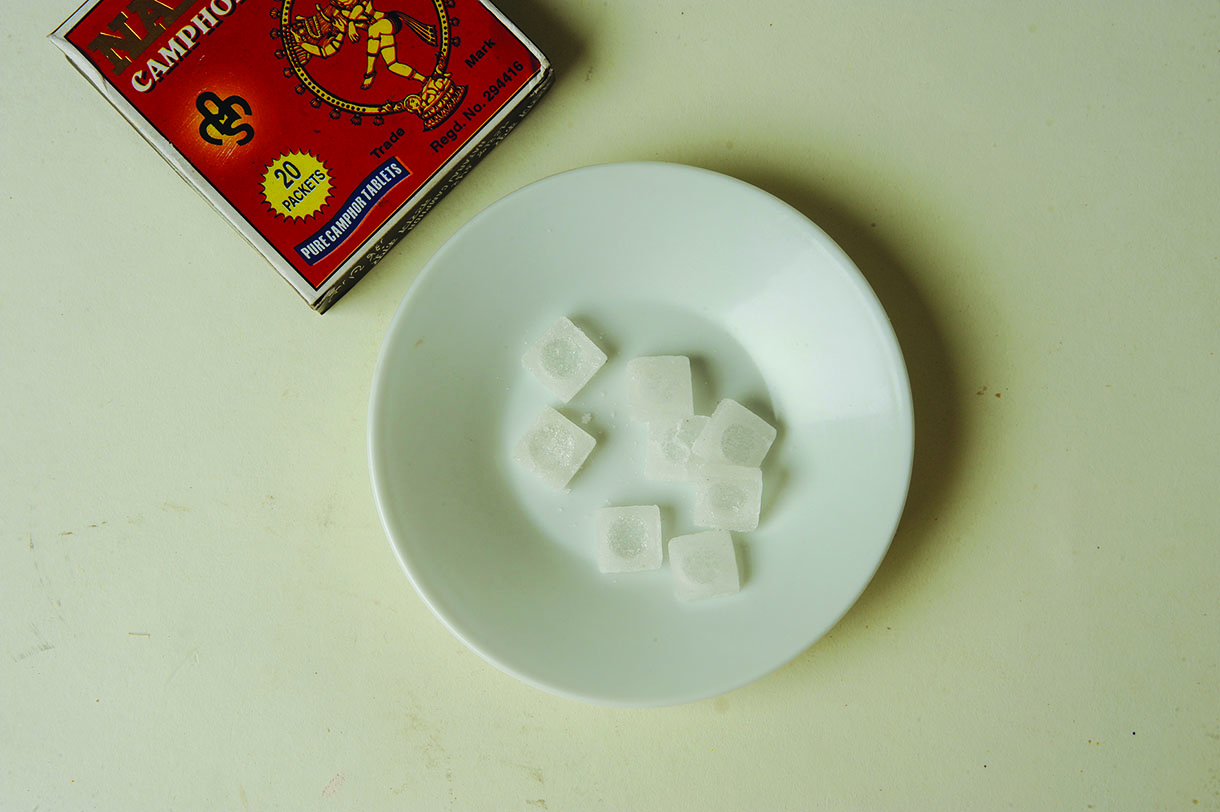
Rust inhibitors – volatile corrosion inhibitors – VCI – are a type of corrosion inhibitor used to protect ferrous materials against corrosion where it is impractical to apply surface treatments. They slowly release compounds within a sealed airspace that actively prevent surface corrosion. A typical application is to protect stored tools or parts inside bags, boxes or cupboards, one advantage of VCIs being that if the container is opened and reclosed, levels of inhibitor will recover. (Volatile substances are those which easily evaporate at room temperature.)
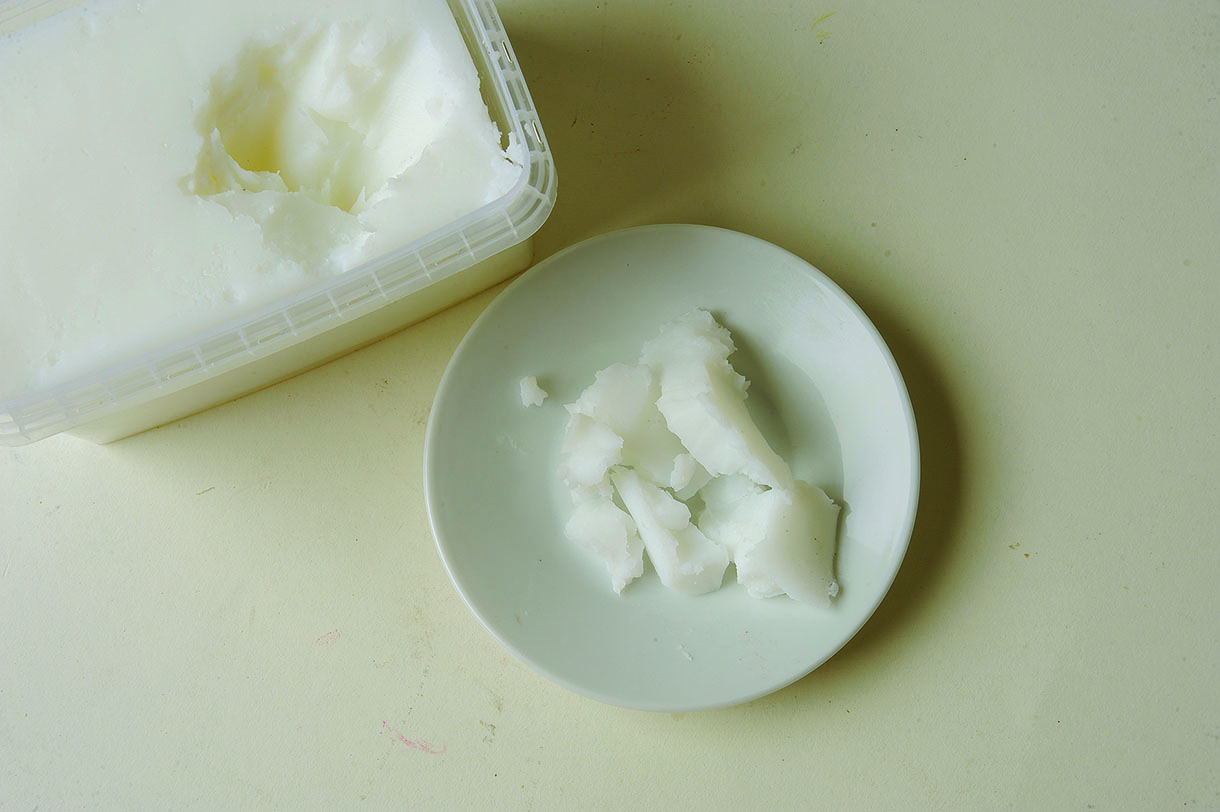
Wax – waxes are a class of chemical compounds that are malleable near ambient temperatures. They are also a type of lipid. Characteristically, they melt above 45°C to give a low viscosity liquid. Waxes are insoluble in water, but soluble in organic, non-polar solvents. All waxes are organic compounds, both synthetic and naturally occurring. (A lipid is chemically defined as a substance that is insoluble in water and soluble in alcohol, ether and chloroform.) – All above quotes courtesy of Wikipedia
What should I be using?
That is a big question, so let’s look at typical workshop situations. I have given some real world examples and usage qualifiers.
Hand tools
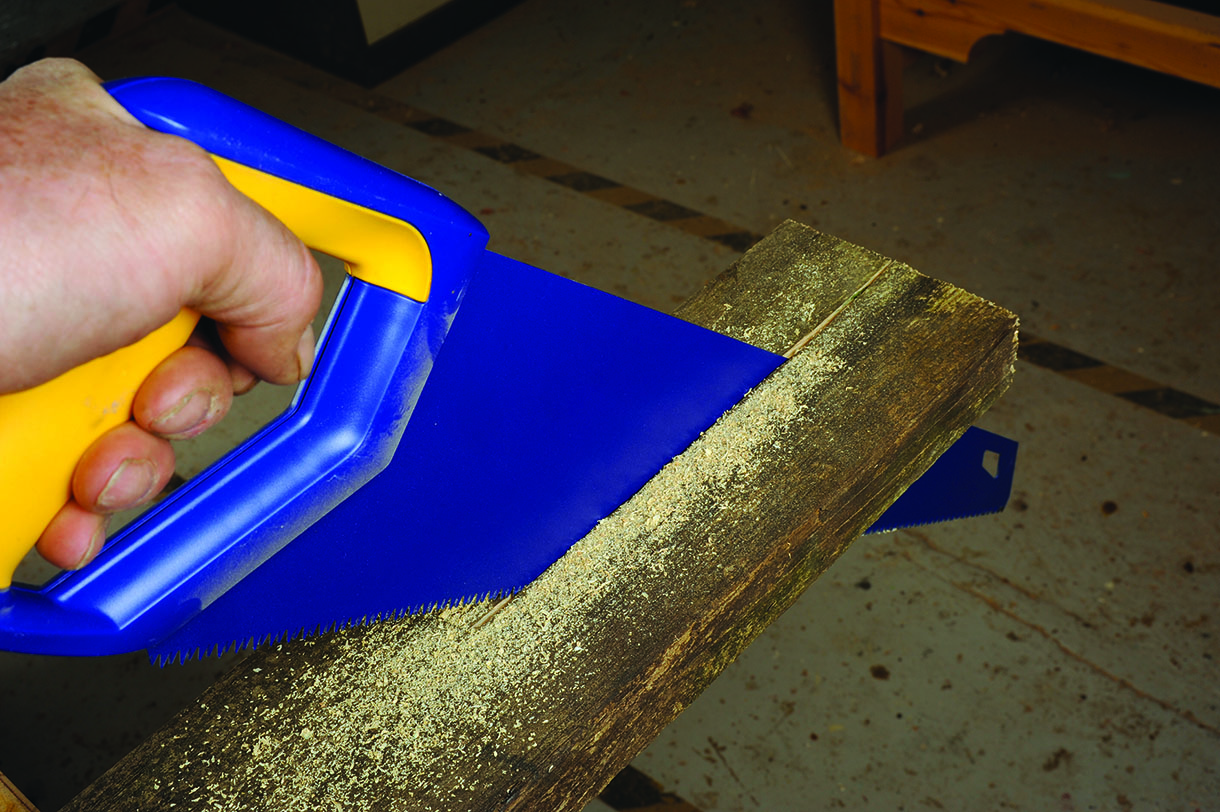
Modern hand tools are more self-maintaining than traditional ones, Teflon-coated blades, for example, and hard-point handsaws, are effectively disposable items once damaged. I do use WD-40, but go online and you will find plenty of people who think it does more harm than good. That seems perverse since it is a water displacement agent designed to repel rust. It doesn’t fit neatly into any of the class definitions above
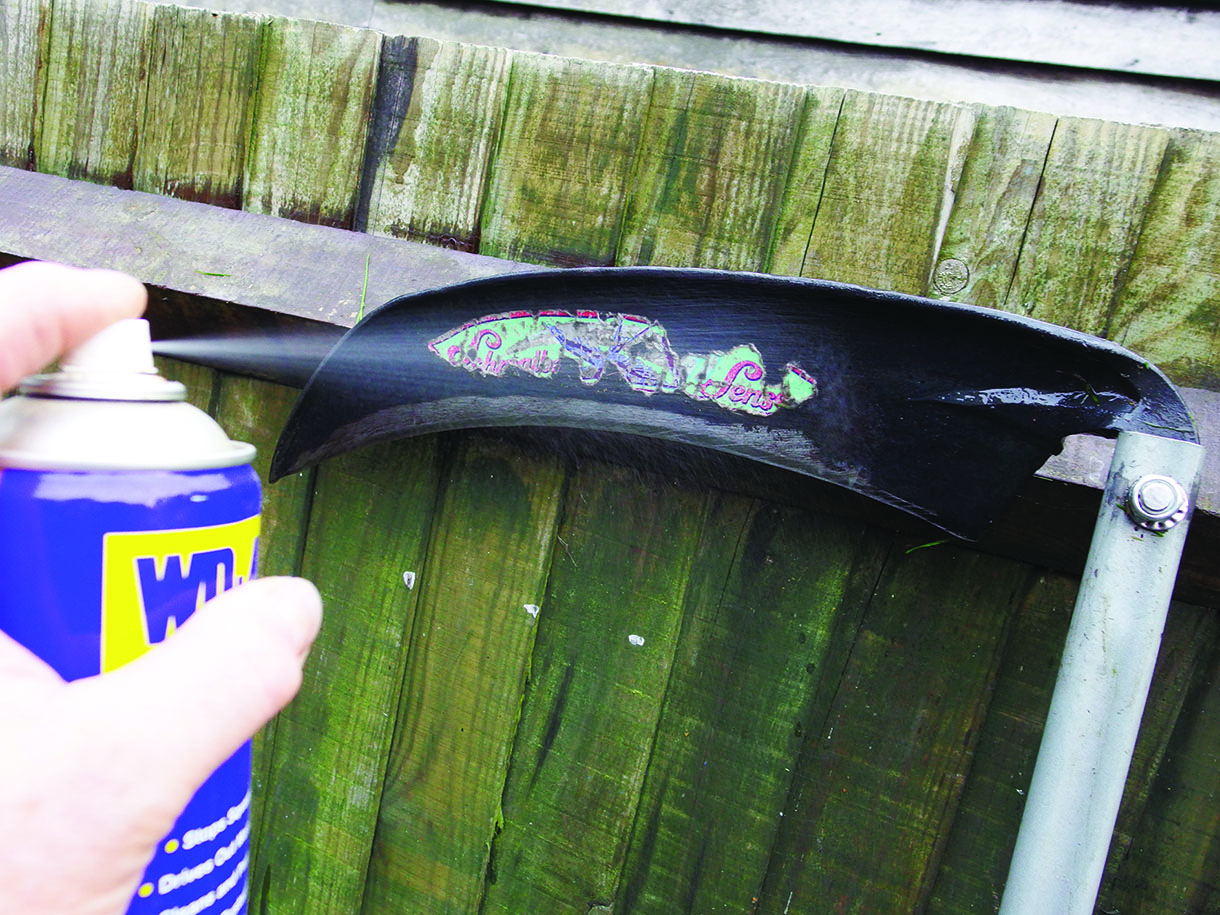
I use a scythe for grass mowing and it gets very wet especially as dewy dawn or dusk are the preferred times of day for hand mowing. A careful wiping off of wet grass and a spray with WD-40 has kept the blade rust-free for a long time. It can help clean tools of grease and dirt
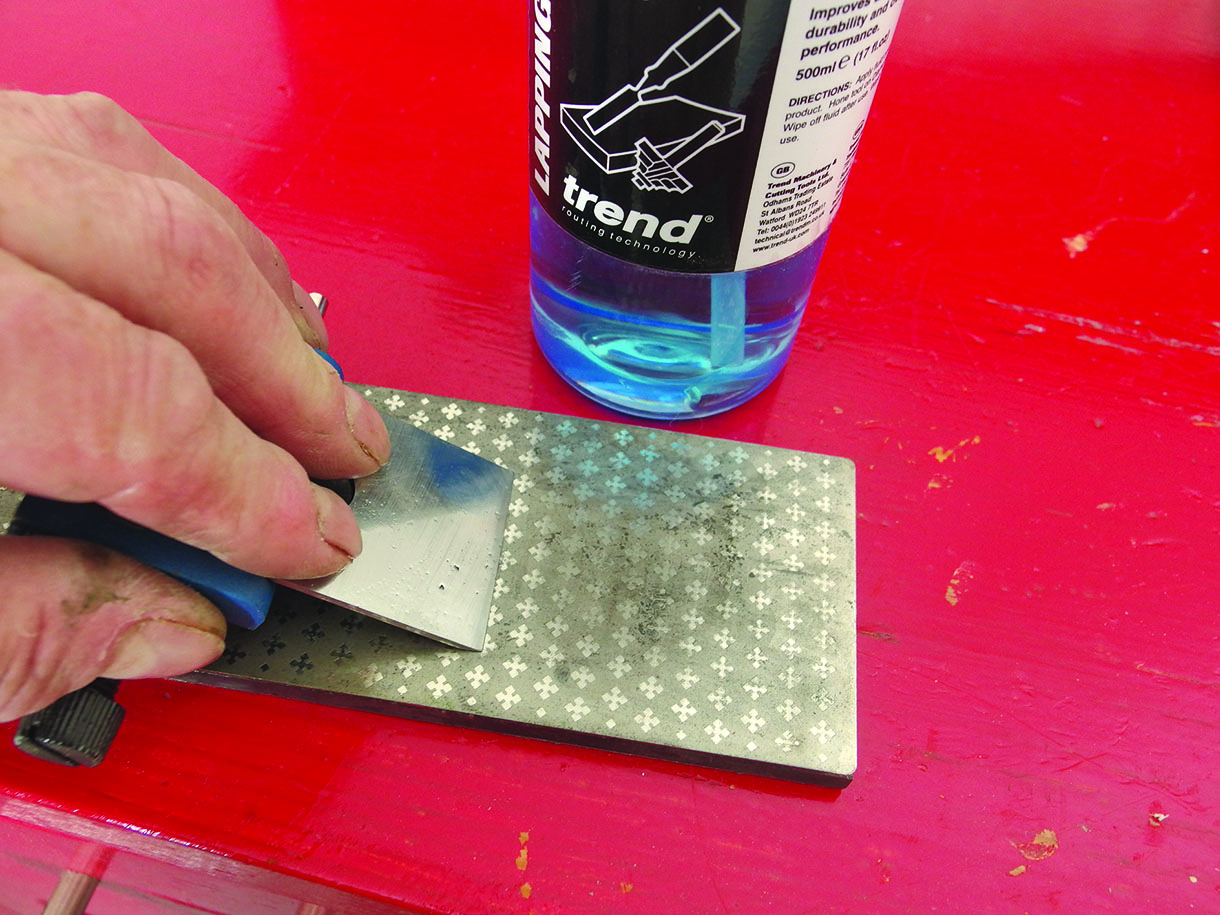
Trend lapping fluid used for sharpening on diamond hones has an oily nature so it gives a degree of protection to newly sharpened edge tools
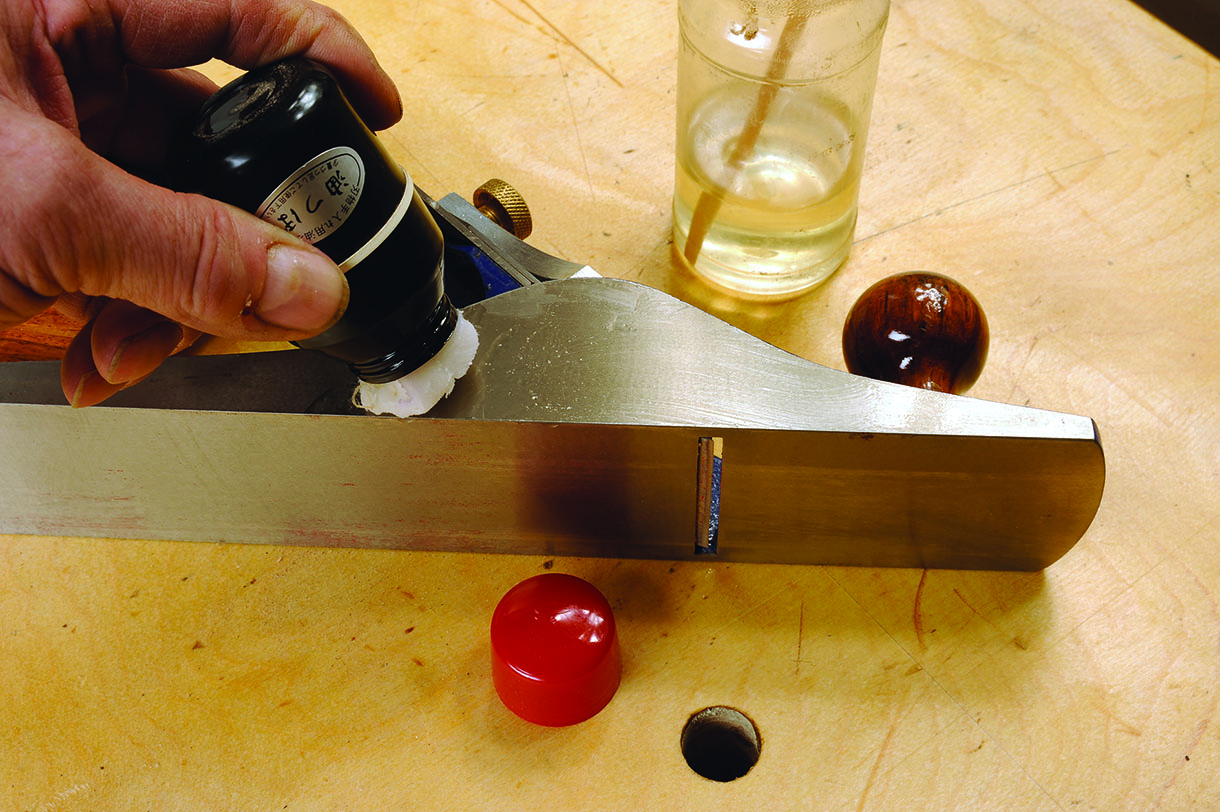
Trend lapping fluid used for sharpening on diamond hones has an oily nature so it gives a degree of protection to newly sharpened edge tools
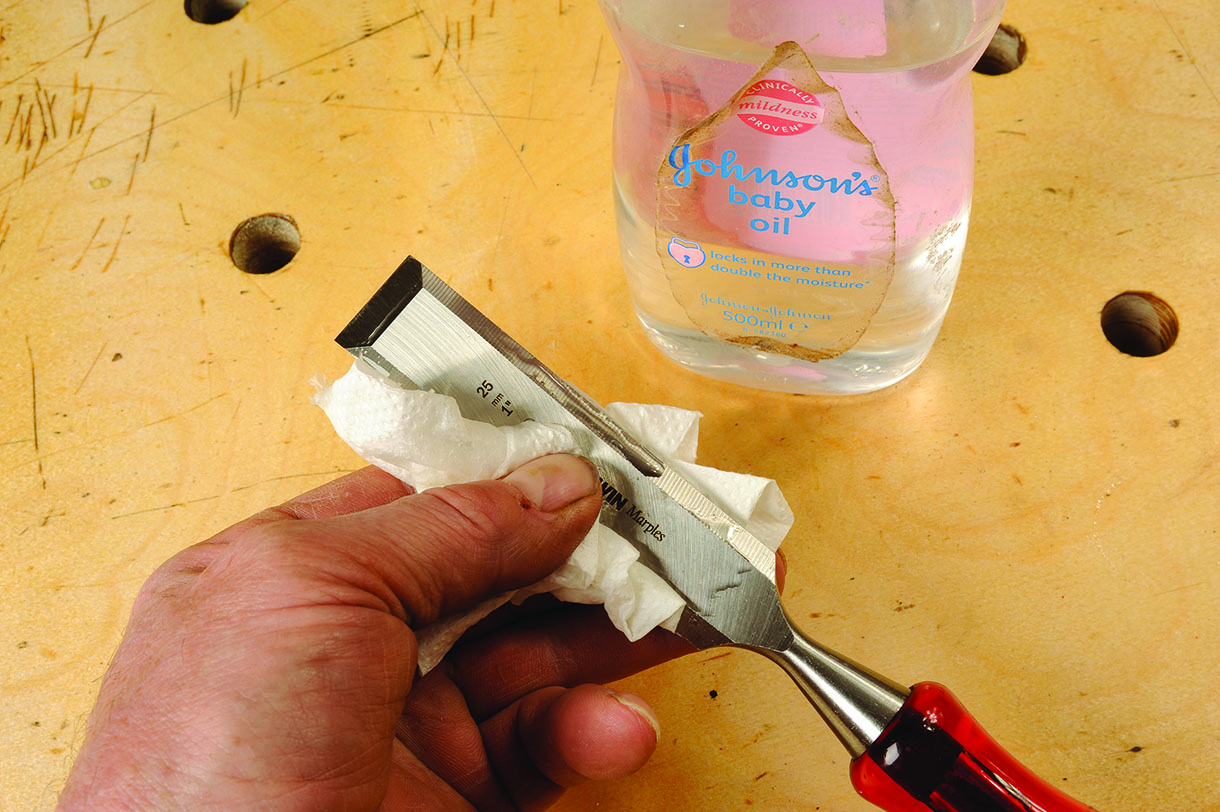
A low-cost alternative for surface protection is baby oil, which has slightly higher viscosity than camellia oil. It is generally a mix of paraffin and palm oil, it is clear and hopefully unscented but check the label. It is widely available.
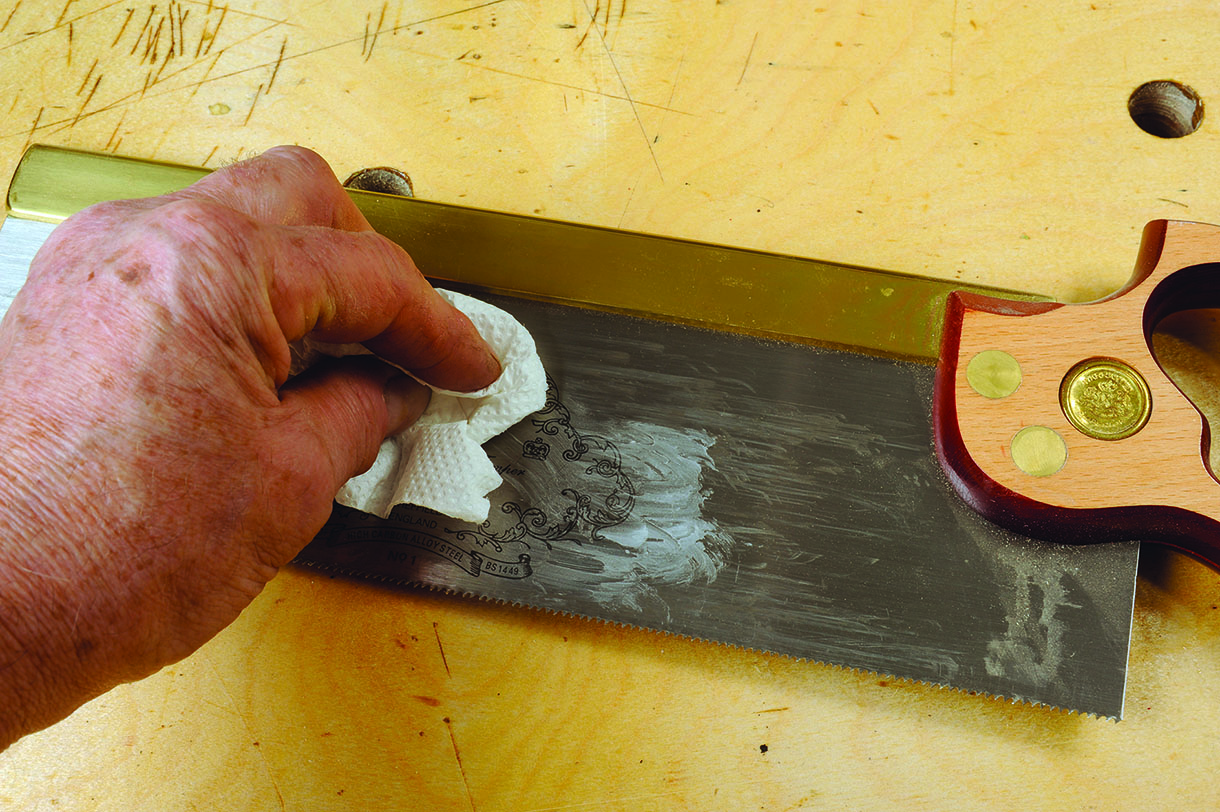
More recently users of traditional handsaws have taken to using good old-fashioned tallow to wipe on their blades for rust protection and give much smoother cutting. Tallow is a form of rendered beef or mutton fat and solid like wax at room temperature, which will last if kept in a sealed container
Machines
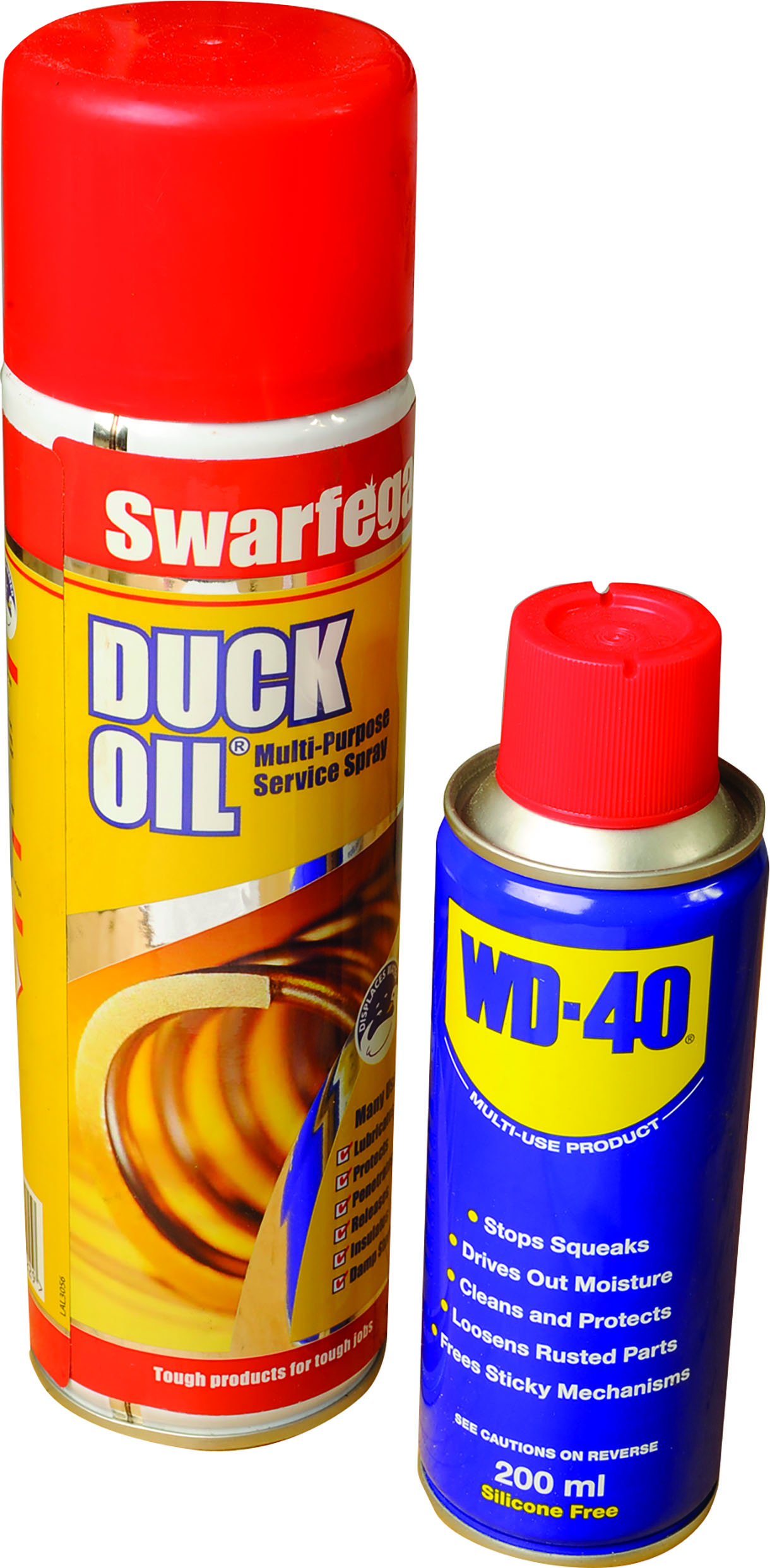
Oiling or lubricating power tools is generally forbidden and unnecessary unless the manufacturer specifies otherwise. Parts given to rusting like drill chucks can be wiped over with WD-40 or duck oil, which is longer lasting but more oily in nature
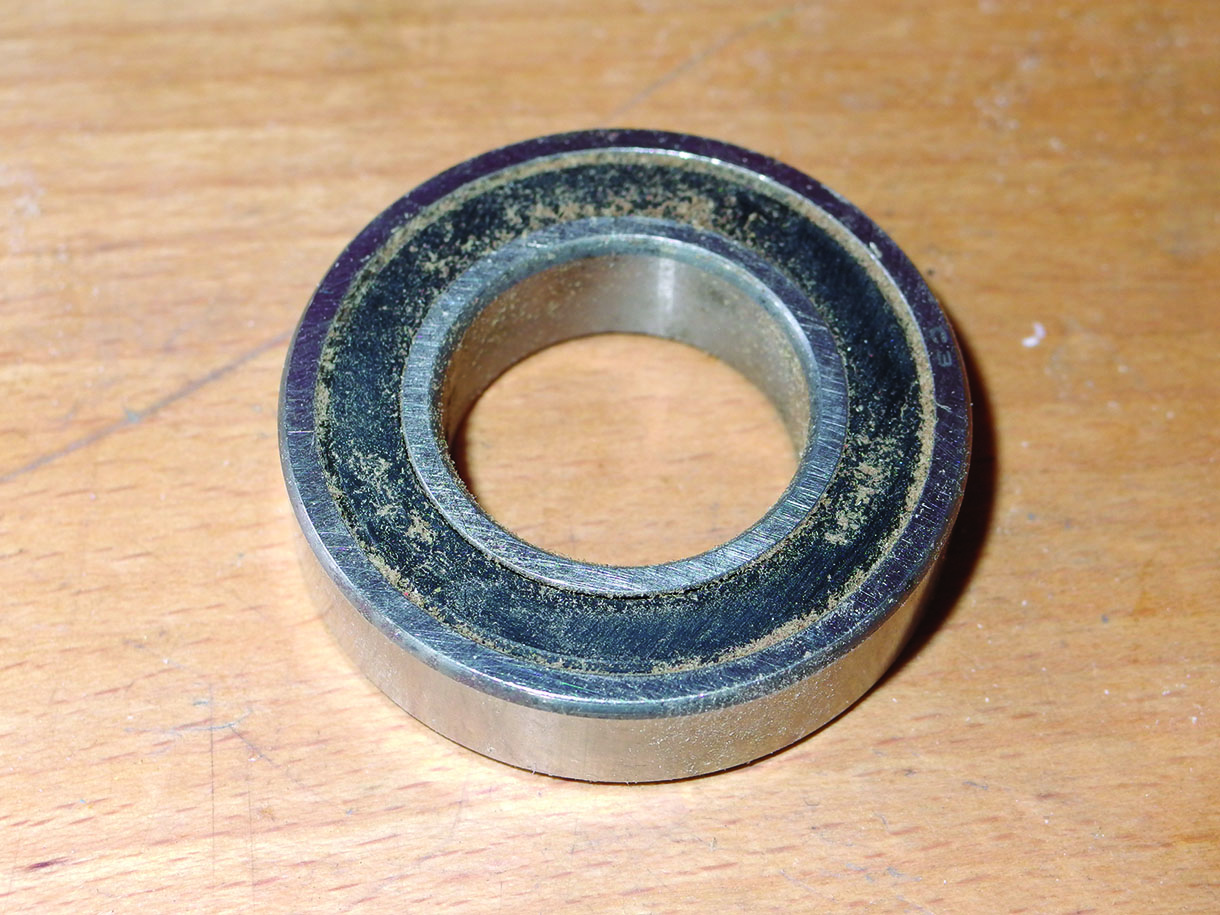
Incidentally, power tools have bearings on the motor spindle, in the case of a router these are special sealed high speed bearings. Different classes of bearing will use a particular type of grease suited to that application and will last for their working life
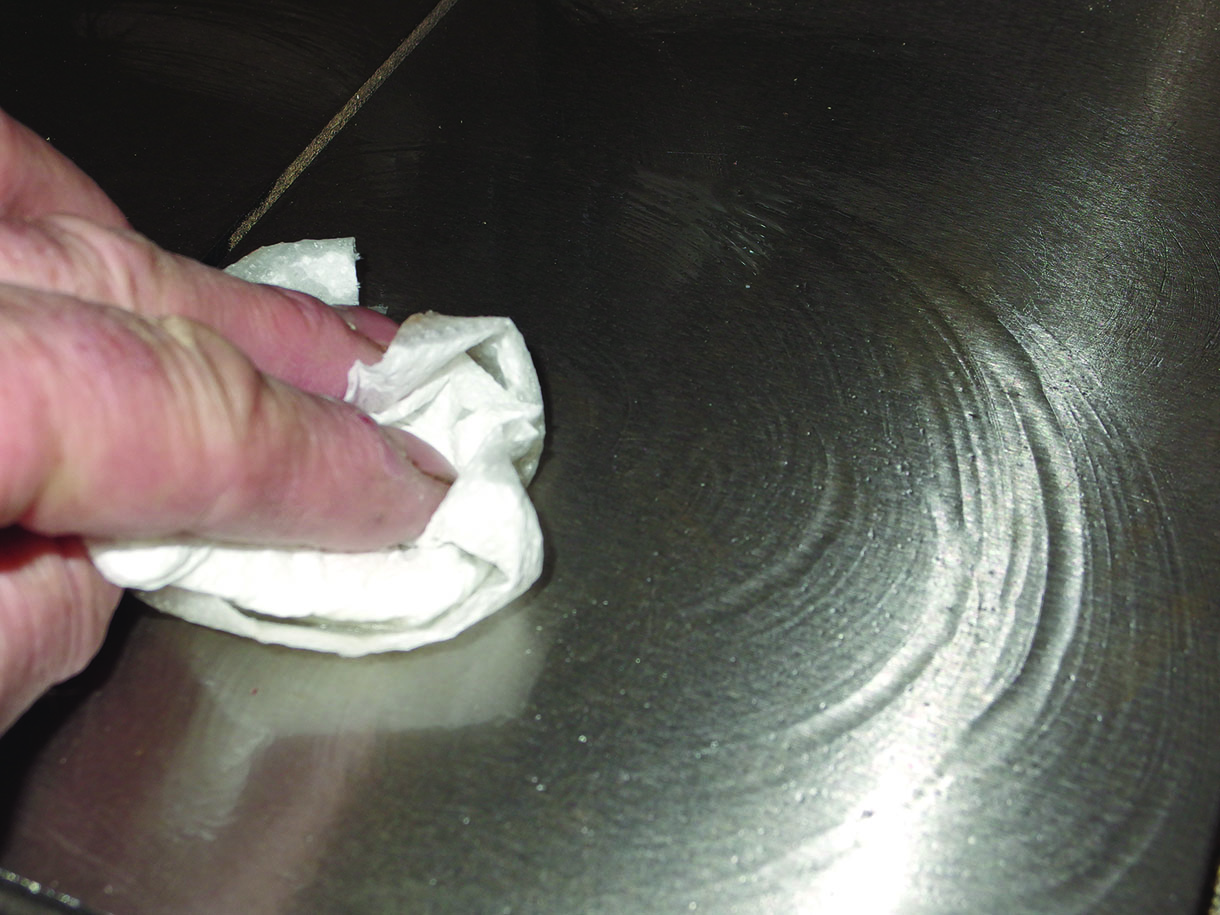
Treat new cast-iron tables with engine oil, which is allowed to soak in overnight as cast iron is a porous material, thus preventing rusting of machine tables
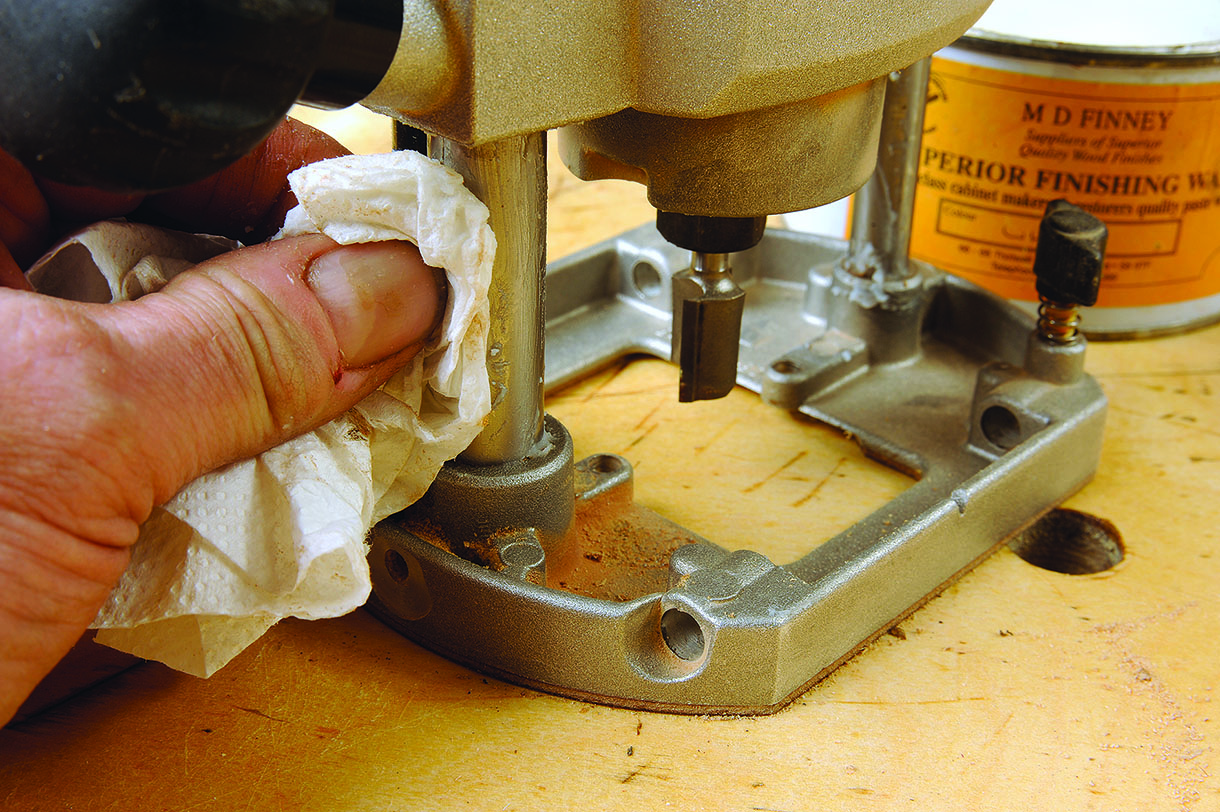
Routers are an exception to the ‘no lubrication’ rule. The plunge action can get a little bit stiff but I don’t like using wet lubrication as it can get on the work and make the columns more sticky and messy. My preference is for a light application of clear hardening furniture wax. It gives just enough slip to ease the plunge motion
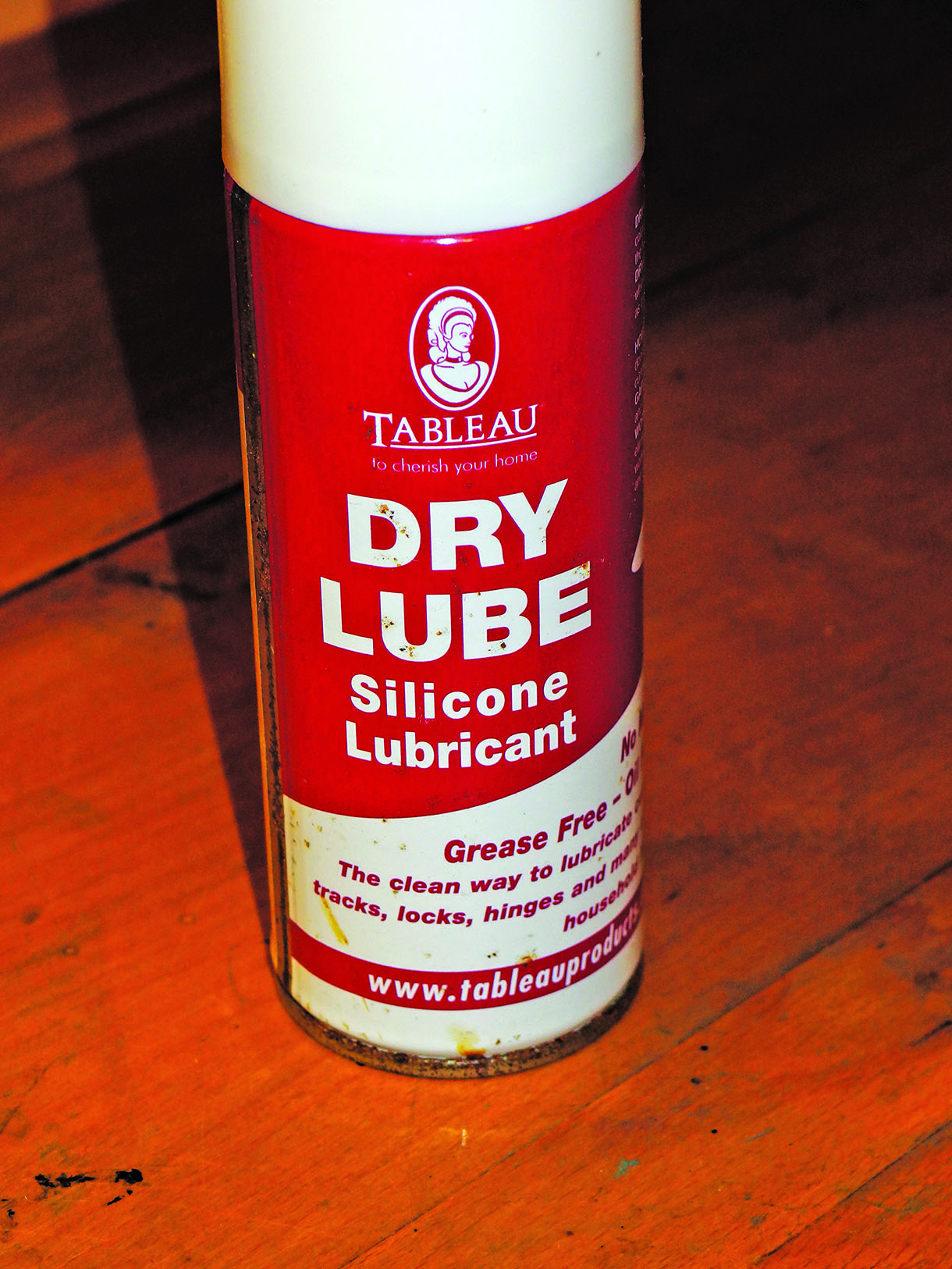
Never use a silicone based spray because the silicone content can contaminate wood preventing finishes from sticking
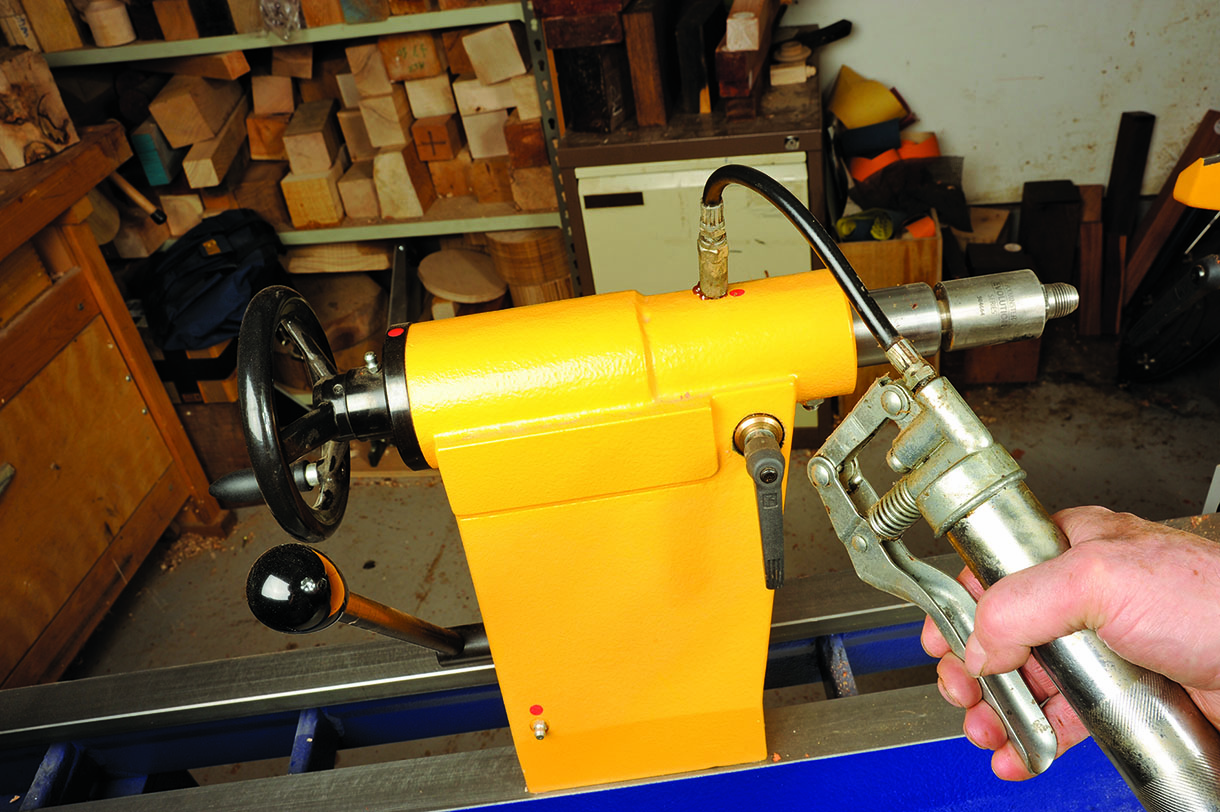
There are exceptions such as big machines with sleeve bearings rather than ball bearings. These will have grease nipples so a grease gun can be snapped on in order to repack the bearing with grease. The definition of grease earlier explains that grease liquefies under motion providing the necessary lubricating effect
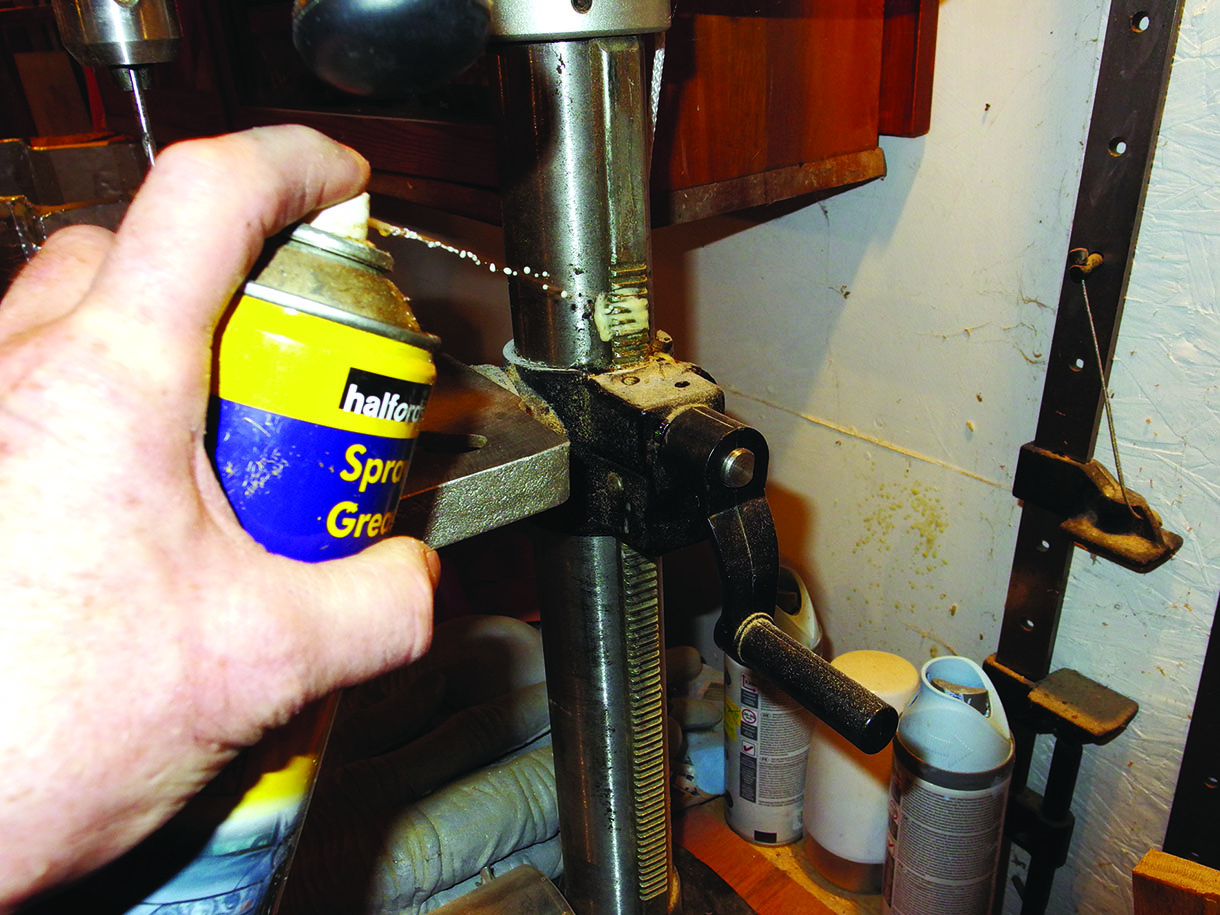
Where you have simple mechanisms with sliding or rotating parts especially on vintage machines, then spray grease available from car accessory stores is an easy answer as it can be directed on to the exact area needing lubrication. I used it to coat the big steel hinges on my garage/workshop doors 25 years ago and they have never rusted
Easing woodwork
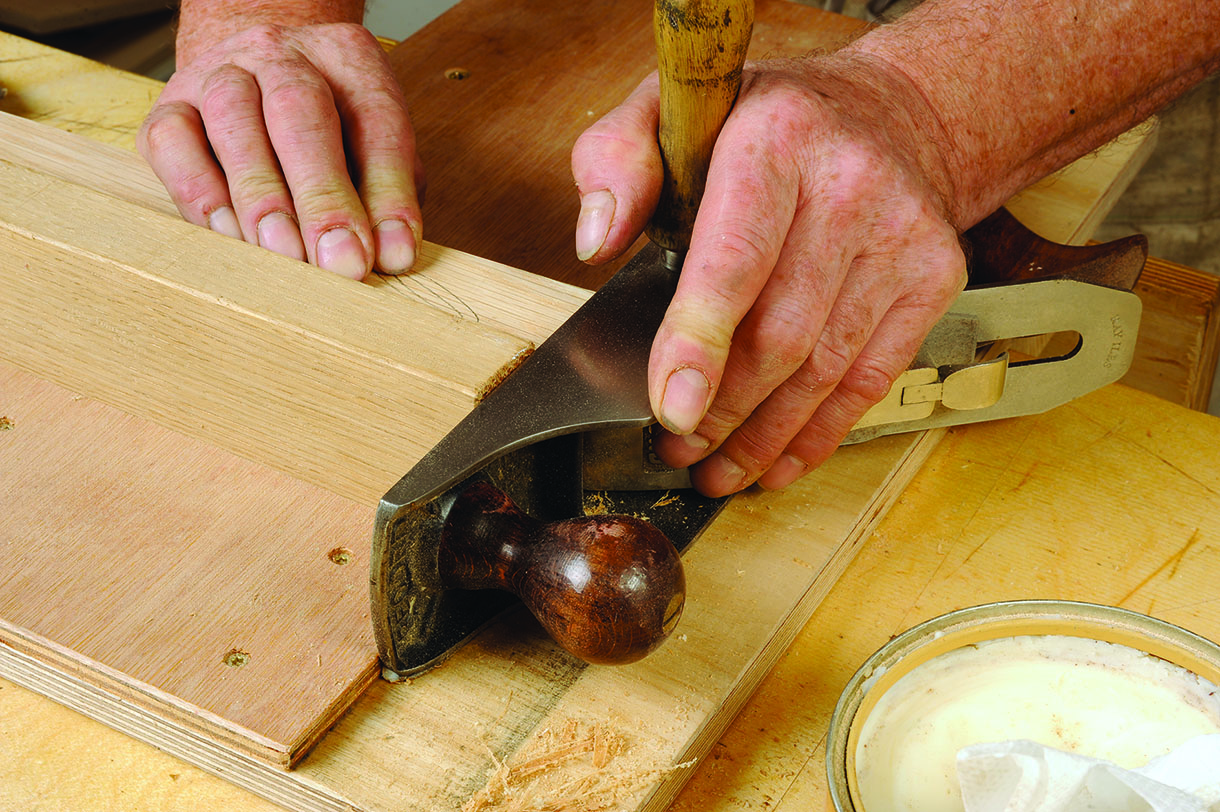
Hardening wax – a mixture of different waxes, the most important one being carnauba which is incredibly hard – can be used to give jigs and work aids some ‘slip’ so that they work better. While wood doesn’t rust of course, it does get used in conjunction with several tools so wax has an important part to play
Avoiding rust
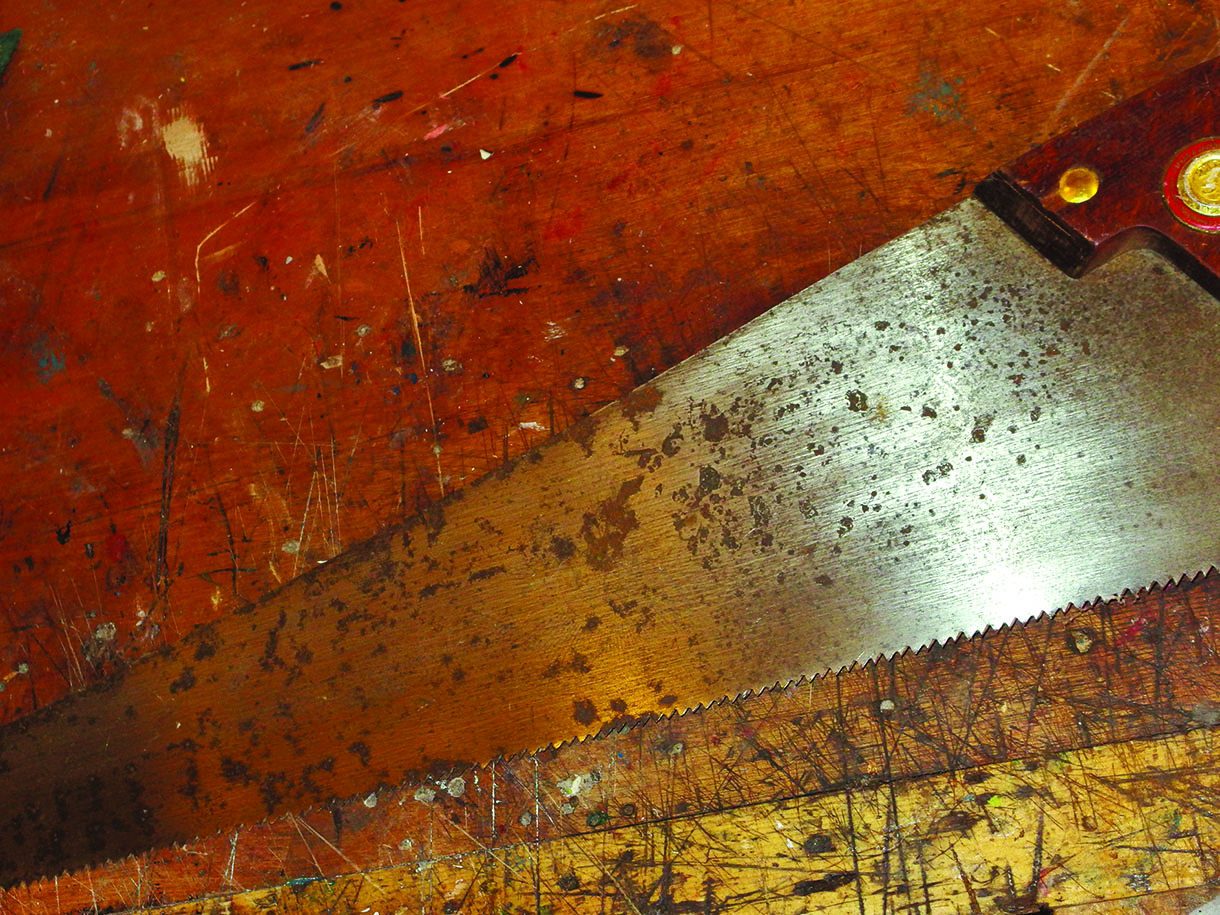
It is always rather tragic when you take care of tools including oiling them, only to discover later on that they have developed a film of surface rust. Unfortunately the average workshop is generally a cold, humid place where moisture lingers in the air waiting to oxidise iron and steel. However there are steps you can take to avoid this

Firstly, if you have a special collection of tools that need protection, build a cabinet to keep them or a tool case. That way they are in their own enclosed ‘micro climate’. Now you need to add a corrosion inhibitor which keeps the moisture at bay
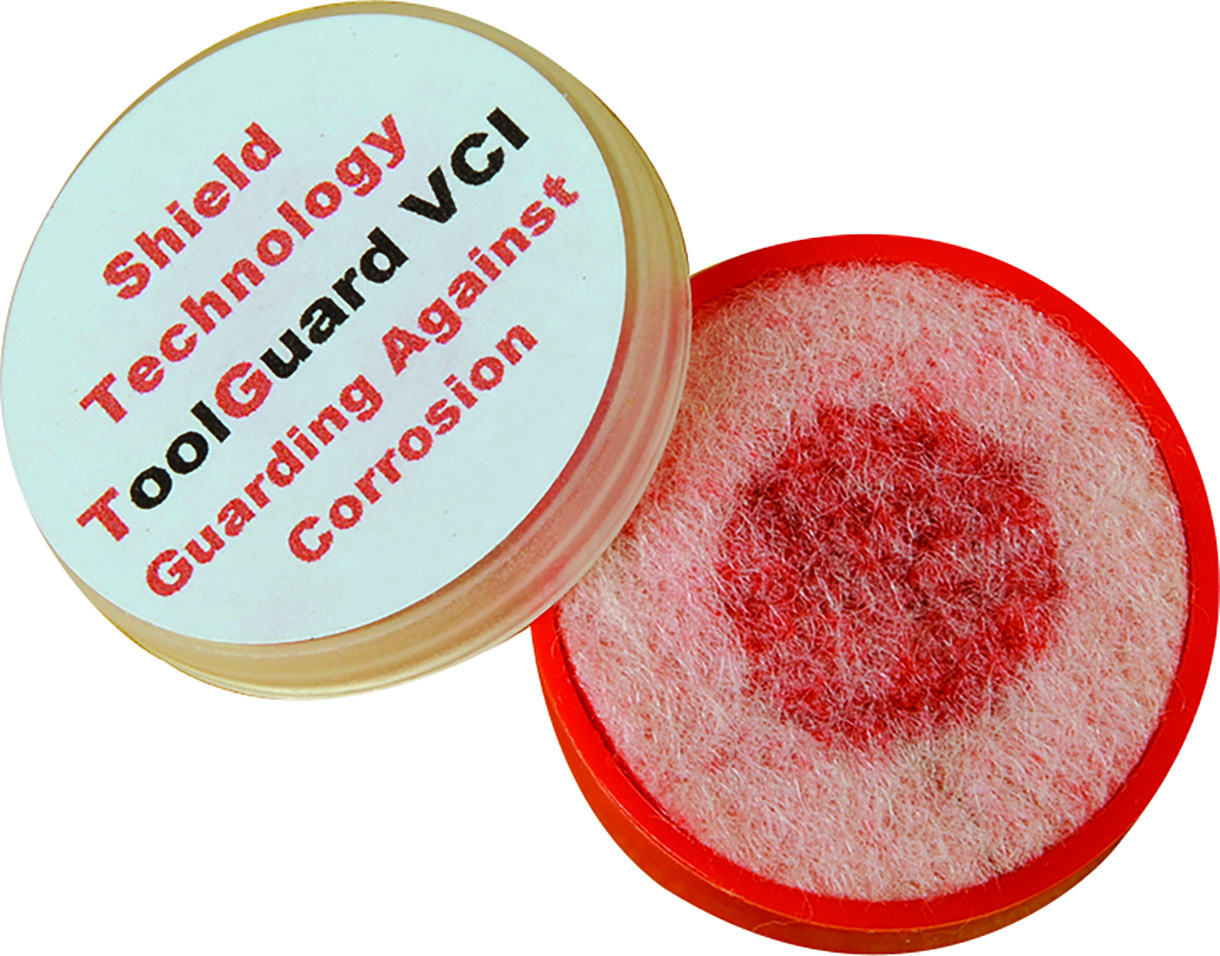
There are several to choose from such as Shield Technology’s Toolguard VCI, which comes in small pots, or Boeshield T-9 spray
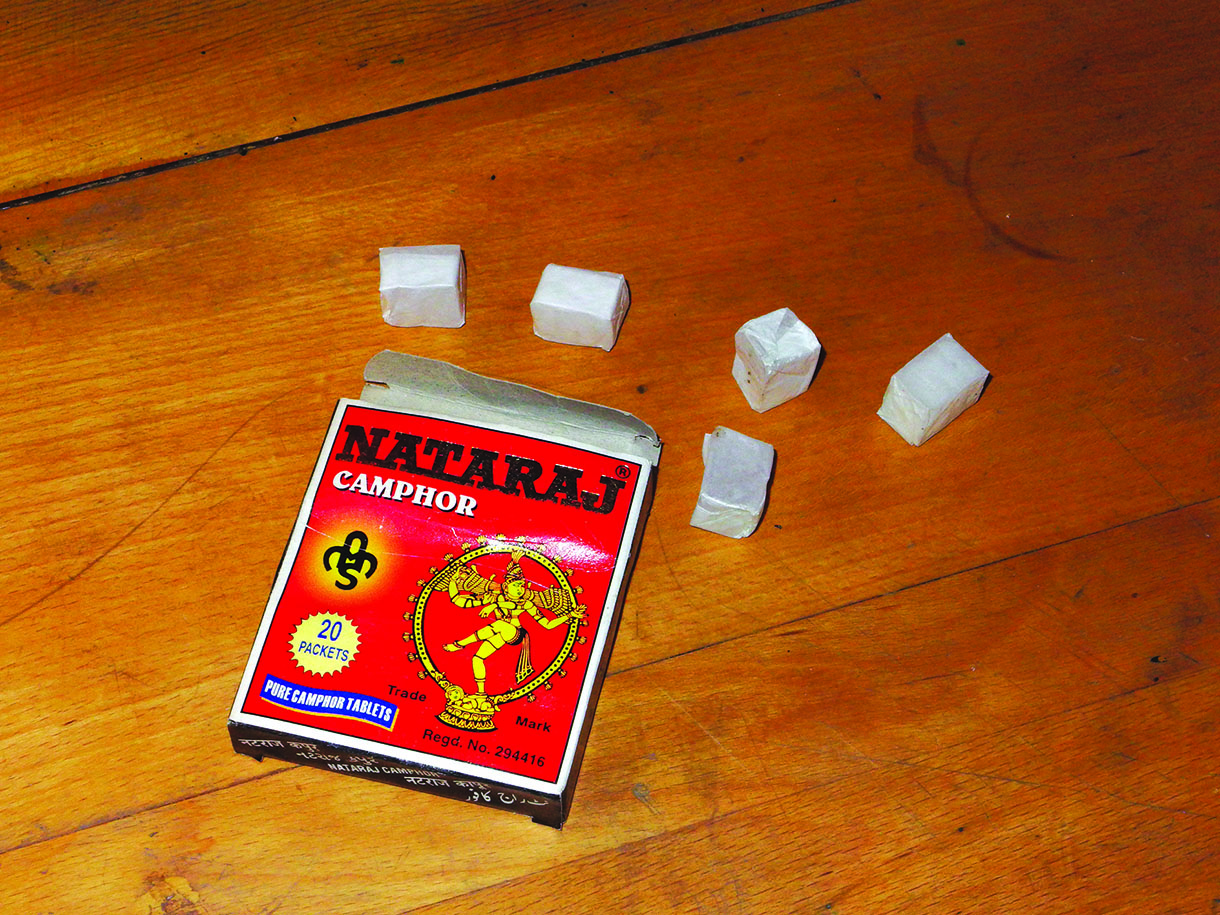
My own choice though is camphor blocks which are more natural. These have a strong smell but are very effective at keeping damp out. Whichever inhibitor you use it will need renewing every once in a while to maintain its effectiveness.
Whatever your situation make sure your tools are well cared for and work smoothly, that way they will last and give good service for years ahead.


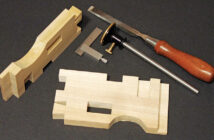
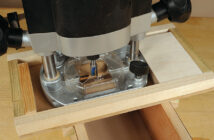
1 Comment
Excellent overview!
Thank you